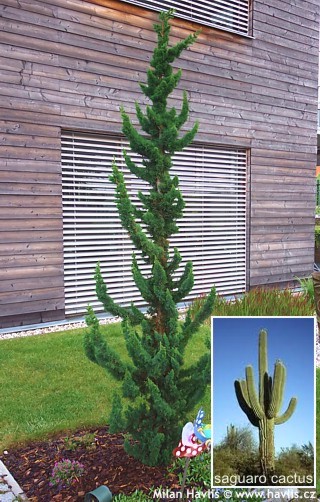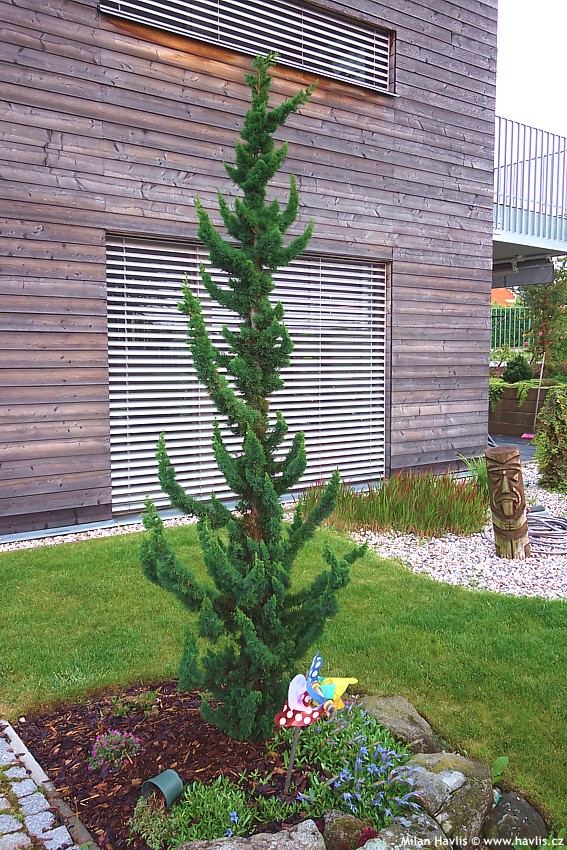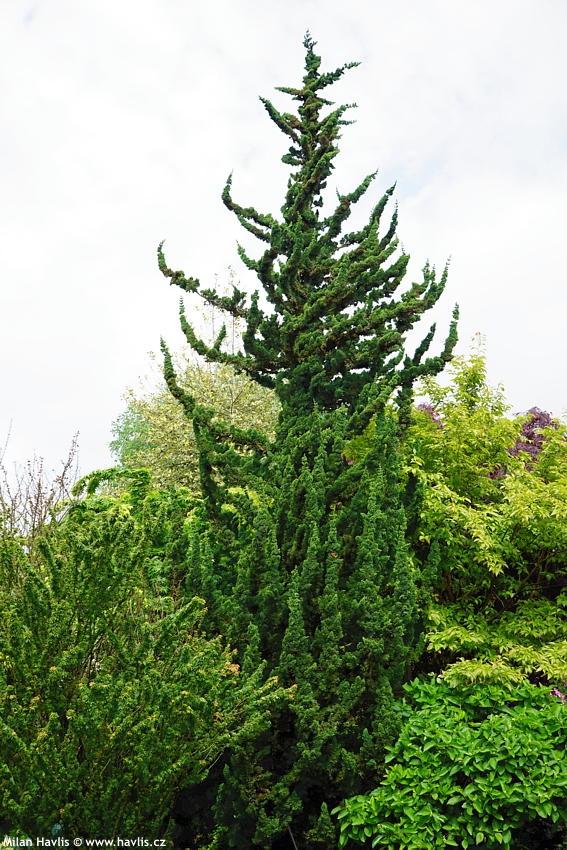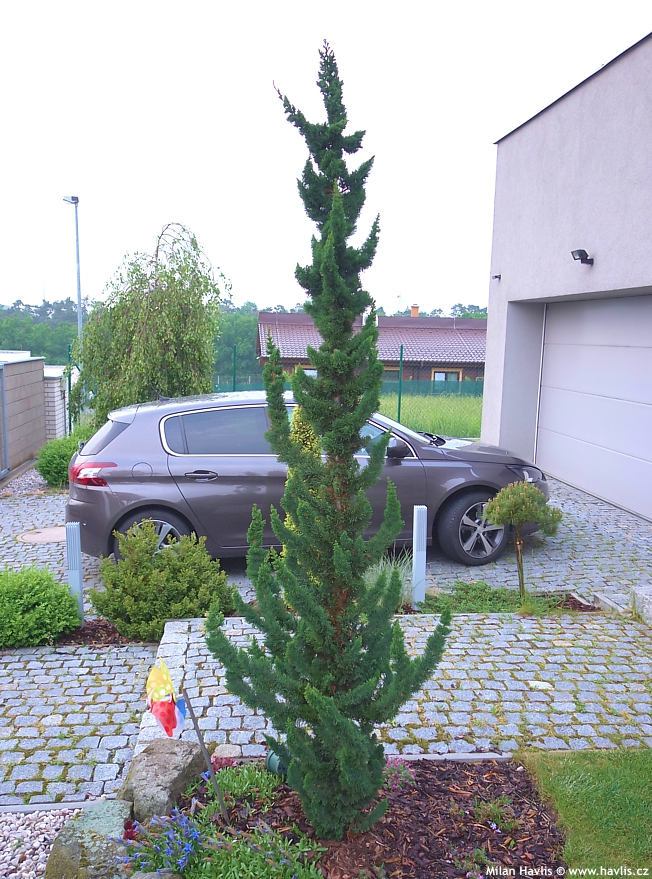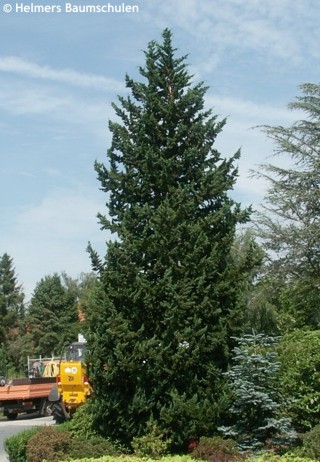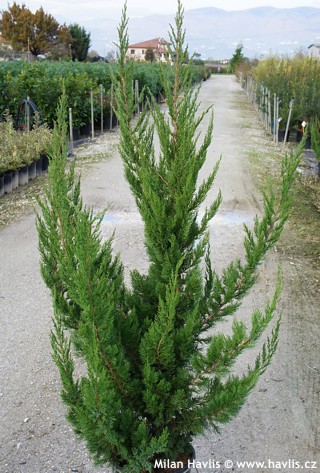Chamaecyparis lawsoniana 'WISSEL'S SAGUARO' Lawson cypress, false cypress
size/type
medium-sized shrub,medium-sized shrub
usual height
1,5-2,5m
usual width
0,5-0,8m
leaves
evergreen conifer
colour of leaves
flowers
insignificant or non-blooming
location
full to partial sun
USDA zone (lowest)
5 (down to -29°C)
winter protection
for zone 5+6

for zone 7

categorized
Chamaecyparis
Lawson cypress is native to northwestern America, from Oregon to northern California. It was first discovered by European Americans near Port Orford, Oregon, and was introduced to horticultural market in 1854. It was described by the Scottish botanist Andrew Murray (1812-1878) and named after another Scottish botanist and merchant, Charles Lawson (1795-1873), who became famous by importing new plant species from America to Britain. This cypress tree was one of his discoveries. It is a hardy, evergreen conifer with soft, scale-like needles. Perhaps all over the world in temperate climates, it is widely planted in gardens and parks and is popular for its variability. There are many colourful varieties that brighten up compositions of dark green shrubs and trees and perform also in decorative outdoor containers.Description of the plant:
Do you know saguaro cactus? The typical succulent that gets most photographed when one wants to show a parched dessert with just one living plant. This cactus influenced the name of this Lawson cypress. It is a sport/selection of Wisselii variety. It is an evergreen conifer of strictly upright, narrowly columnar habit. Its branches are covered with congested, scale-like, emerald green needles.The typical features are the arms, similar to those which saguaro cactus makes. They spoil the slim habit and make this plant unique, piece by piece. It is a very slow grower. Pruning is not required but you can model a fantastic shape by removing shorter, horizontal branches along the trunk, leaving only a few strong ones that will form the arms. Do this in mid spring or midsummer. Never cut into old wood.
False cypress prefers moist but well-drained, slightly acidic soil but is adaptable to almost all types of soil. Grow it in full sun or half shade either in a garden bed or in an outdoor pot. Fully hardy to about -29°C (USDA zone 5).
Last update 22-02-2013
QUICK PRICE OVERVIEW
CURRENTLY SOLD OUT












